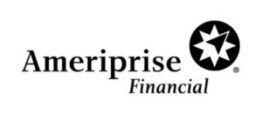

Bank of America subsidiary Merrill Lynch, Pierce, Fenner & Smith Inc. has been fined $1 million by the Financial Industry Regulatory Authority, or FINRA, for failure to supervise one of its stockbrokers at its branch office in San Antonio, Texas. FINRA announced the fine on Oct. 4.
Bruce Edward Hammonds, a registered representative with the firm, used a Merrill Lynch account to operate a Ponzi scheme, luring 11 people to invest more than $1 million in B&J Partnership, an entity he ran for over 10 months, according to information released by FINRA. Hammonds request to open a business account for B&J was approved by Merrill Lynch supervisors, who subsequently failed to monitor the funds that the investors deposited and Hammonds withdrew. He was fired by Merrill Lynch in June 2008.
Hammonds Sentenced for Securities Fraud
Hammonds was sentenced to 57 months in prison for securities fraud by a federal court in the Western District of Texas in October 2009, to be followed by three years of supervised release. He was also ordered to pay about $1.1 million in restitution and to forfeit Merrill Lynch and Wachovia Bank accounts, as indicated by FINRA public disclosure records.
In December 2009, FINRA permanently barred Hammonds from any association with any FINRA member in any capacity for violations of Section 10(b) and 10(b)(5) of the Securities Exchange Act of 1934 and National Association of Securities Dealers Rules 2110, 2120 and 2330.
Hammonds submitted to the permanent bar without admitting or denying the allegations and consented to the sanction and the entry of findings, according to a February 2010 disciplinary report from FINRA. Merrill Lynch reimbursed all investors who were harmed by Hammond’s misconduct.
FINRA found that Hammonds fraudulently induced Merrill Lynch customers and other investors to invest more than $1 million in the partnership he had formed. The customers either liquidated their accounts or withdrew money from other accounts as a result of the fraud.
Merrill Lynch supervisors approved the B&J Partnership account and they failed to follow up. Hammonds never disclosed the account and his interest in it through the firm’s electronic compliance disclosure system. He told his investors that Merrill Lynch would manage their investments and misrepresented the type of products in which B&J would invest and the possible returns, the disciplinary report said.
Hammonds misappropriated the funds to pay for personal expenses and to pay investors as in a typical Ponzi scheme, rather than investing the money in indexed funds, futures contracts and securities, which was the plan he sold to investors. FINRA also found that Hammonds provided investors with fictitious account statements that reported growth in their investments, the disciplinary report said.
Merrill Lynch’s Failure to Monitor Employee Misconduct
As for Merrill Lynch, the $1 million fine was levied for its failure to have an adequate supervisory system in place to monitor employee accounts for potential misconduct. The Merrill Lynch system automatically tracked accounts using an employee’s social security number as the primary tax identification number, but if the employee’s social security number was not used, the system could not see the account and it would be missing from the database. Merrill Lynch relied on its employees to manually input any account not attached to a social security number.
From January 2006 to June 2010, Merrill Lynch failed to monitor about 40,000 accounts in which its employees had an interest, according to the information released by FINRA. For large chunks of time, these accounts were not reported and unavailable on the supervisory system.
Brad Bennett, an executive vice president with FINRA and its chief of enforcement officer, said Merrill Lynch’s flawed supervisory system and its excessive reliance on self-reporting by employees allowed Hammonds to facilitate his Ponzi scheme to defraud investors. In agreeing to the $1 million fine, Merrill Lynch neither admitted nor denied the charges, but consented to the entry of FINRA’s findings.
FINRA public disclosure records show that the eight mostly verbal customer complaints involving Hammonds during his employment at Merrill Lynch and shortly thereafter were all for misappropriation of funds.
Clustered in June and July of 2008, they claimed more than $1 million in damages total and all were settled, most for the full amount of damages claimed. The highest amount of damages claimed — $750,000 — was alleged in July 2008, and the roughly $538,000 paid out was the only claim that settled for less the total. The smallest damages claim was for $12,120, also made in July 2008.
Guiliano Law Group
The practice of Nicholas J. Guiliano, Esq., and The Guiliano Law Group, P.C., is limited to the representation of investors in claims for fraud in connection with the sale of securities, the sale or recommendation of excessively risky or unsuitable securities, breach of fiduciary duty, and the failure to supervise. We accept representation on a contingent fee basis, meaning there is no cost to unless we make a recovery for you, and there is never any charge for a consultation or an evaluation of your claim. For more information contact us at (877) SEC-ATTY.








